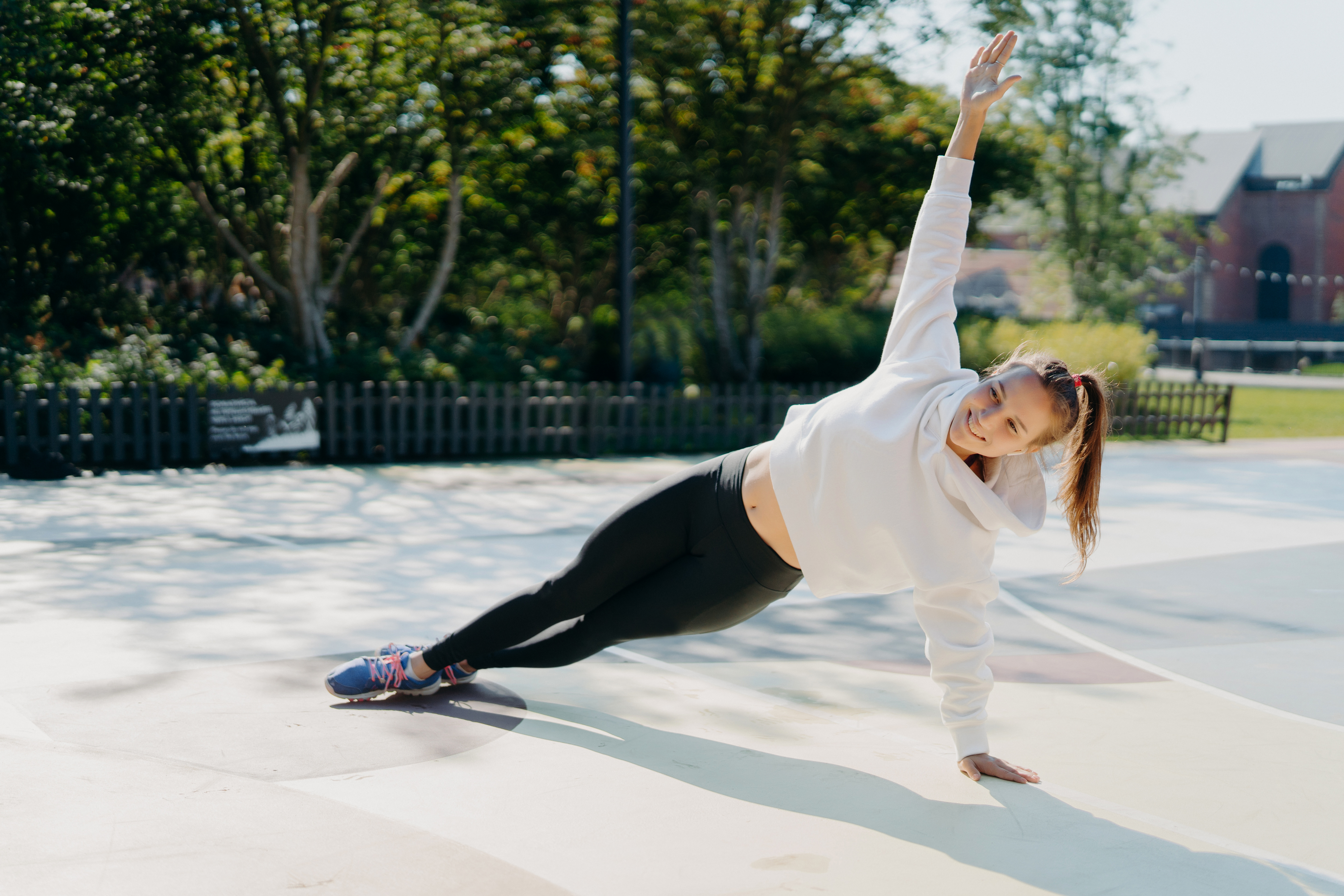15 Ways Your Posture Could Be Causing Vertigo
Your posture does more than affect how you look—it plays a crucial role in your overall health. One of the lesser-known consequences of poor posture is its potential to cause or worsen vertigo, a sensation of dizziness or spinning that can disrupt daily life. Poor posture impacts the alignment of your neck, spine, and inner ear, all of which are essential to maintaining your balance and equilibrium. When misaligned, these areas can lead to compression, tension, and impaired blood flow, all contributing to vertigo. This article explores 15 ways your posture could be causing vertigo, offering insights into how small adjustments can significantly reduce symptoms. By understanding the connection between posture and vertigo, you can take proactive steps to align your body, enhance your balance, and improve your overall quality of life.
1. Forward Head Posture

Forward head posture, often called "tech neck," is one of the most common culprits behind posture-related vertigo. This posture occurs when your head juts out in front of your shoulders rather than aligning directly above them. The human head is quite heavy, weighing about 10–12 pounds, and this improper alignment increases the strain on the cervical spine and the surrounding muscles. This stress can lead to nerve compression and restricted blood flow to the brain and inner ear, both of which are critical for maintaining balance. The vestibular system, located in the inner ear, relies on consistent blood flow to function properly. When forward head posture disrupts this flow, you may experience dizziness, lightheadedness, or even episodes of vertigo. Correcting this posture involves strengthening the neck and upper back muscles while being mindful of how you position your head during daily activities. Simple exercises, such as chin tucks and neck stretches, can help realign your head with your shoulders and reduce the strain contributing to vertigo.
2. Text Neck Syndrome

Text neck syndrome is a modern-day problem caused by frequent use of smartphones and other handheld devices. Constantly looking down at your screen puts immense strain on the neck and upper back muscles, pulling the cervical spine out of alignment. Over time, this repeated stress can lead to pain, stiffness, and in some cases, vertigo. The pressure placed on the neck can also interfere with the nerves and blood vessels that connect to the inner ear, which plays a key role in balance. This syndrome doesn’t only affect heavy device users—any activity that causes you to crane your neck downward for extended periods, such as reading or knitting, can create similar issues. To prevent text neck syndrome, practice holding your devices at eye level and take frequent breaks to stretch and move your neck. Additionally, strengthening the muscles around your neck and upper back can help combat the strain and reduce the risk of vertigo symptoms.
3. Rounded Shoulders

Rounded shoulders are often a result of prolonged sitting, especially when hunched over a computer or desk. This posture pulls the upper spine out of its natural alignment, causing tension across the chest and weakness in the upper back. When the shoulders roll forward, the neck often follows suit, leading to additional stress on the cervical spine. This misalignment can impact the vestibular system, resulting in dizziness and balance issues. The knock-on effects of rounded shoulders extend beyond vertigo—they can contribute to poor circulation, muscle imbalances, and even shallow breathing, which exacerbates feelings of lightheadedness. To correct this posture, focus on exercises that strengthen the upper back and open the chest, such as rows, reverse flys, and chest stretches. Additionally, practicing good ergonomic habits, such as adjusting your desk setup to encourage an upright posture, can go a long way in reducing the likelihood of vertigo caused by rounded shoulders.
4. Hunchback Posture (Kyphosis)

Kyphosis, often referred to as a hunchback posture, is characterized by an exaggerated curve in the upper back. This condition can develop over time due to poor posture habits or, in severe cases, conditions like osteoporosis. The forward curve compresses the chest cavity, limiting lung expansion and reducing oxygen flow. This restriction can have a cascading effect, as poor oxygenation and restricted blood flow impact the inner ear and brain, leading to symptoms of vertigo. In addition to affecting balance, kyphosis places strain on the neck and shoulders, further exacerbating tension in the cervical spine. This tension may interfere with the nerves responsible for transmitting balance signals to the brain. Addressing kyphosis requires a combination of posture correction exercises, such as wall angels and thoracic extensions, and professional guidance if the condition is advanced. Maintaining an active lifestyle that includes stretches and strengthening exercises can prevent kyphosis from developing or worsening.
5. Poor Sitting Posture

Poor sitting posture, such as slouching in your chair or leaning forward while working, is a major contributor to posture-related vertigo. Sitting in a slouched position compresses the lower back, rounds the shoulders, and places undue strain on the neck. Over time, this can lead to muscle imbalances, nerve compression, and reduced blood flow to the brain and inner ear. These effects can disrupt the body's ability to maintain balance, resulting in dizziness or vertigo. The impact of poor sitting posture is especially pronounced for those who spend long hours at a desk or in front of a computer. To improve your sitting posture, ensure that your chair provides adequate lumbar support and that your feet rest flat on the floor. Position your computer monitor at eye level to avoid craning your neck, and take regular breaks to stand, stretch, and reset your posture. Developing these habits can reduce strain on your spine and alleviate vertigo symptoms over time.
6. Sleeping Positions

Improper sleeping positions can have a significant impact on your posture and contribute to vertigo. Sleeping on your stomach, for example, forces your neck to twist to one side for extended periods, which can strain the cervical spine and lead to nerve compression. Similarly, using an overly thick or flat pillow can misalign the neck and shoulders, causing tension and stiffness that may trigger vertigo upon waking. The best sleeping positions for posture involve lying on your back or side with a supportive pillow that keeps your neck and spine in a neutral alignment. Memory foam pillows or cervical pillows are particularly effective for maintaining proper neck support. Additionally, ensure your mattress provides adequate support to prevent your hips and shoulders from sinking too deeply, which can throw off spinal alignment. Prioritizing good sleep posture not only reduces vertigo symptoms but also improves overall sleep quality.
7. Desk Ergonomics

A poorly arranged workstation can have a cascading impact on your posture and overall health, particularly for those who spend long hours at a desk. Sitting for extended periods often leads to slouching, leaning forward, or craning the neck to see a poorly positioned screen. These habits place significant strain on the cervical spine, shoulder muscles, and lower back, which can directly contribute to vertigo by compressing nerves and reducing blood flow to the brain. Poor desk ergonomics also encourage static postures, further exacerbating discomfort and dizziness. To counteract this, ensure your desk is ergonomically optimized. Position your monitor at eye level, about an arm’s length away, to minimize neck strain. Adjust your chair so that your feet rest flat on the floor and your thighs are parallel to the ground. Use a lumbar support cushion if needed to maintain the natural curve of your spine. Incorporating movement, such as standing or stretching breaks every 30 minutes, can also improve circulation and alleviate tension. Taking these steps can transform your workstation into a space that supports good posture and minimizes vertigo triggers.
8. Lack of Core Strength

Your core muscles play a significant role in maintaining good posture and overall stability. A weak core can lead to slouching or an inability to hold the spine in a neutral position, which in turn puts additional strain on the neck and back. This misalignment can interfere with blood flow and nerve function, particularly in the cervical spine, which connects to the brain and inner ear—both crucial for balance. Weak core muscles may also exacerbate the effects of other poor postural habits, compounding their impact on vertigo. Building core strength can significantly reduce the risk of vertigo linked to poor posture. Exercises such as planks, bridges, and yoga poses like the cat-cow stretch can help strengthen your core and improve your posture. A strong core provides a solid foundation for the spine, allowing the body to maintain its alignment throughout the day, reducing stress on the neck and inner ear and thereby mitigating vertigo symptoms.
9. Driving Posture

Poor driving posture is a surprisingly common yet overlooked contributor to vertigo. Many people unconsciously lean forward, hunch over, or grip the steering wheel too tightly during their commute, placing unnecessary strain on the neck, shoulders, and upper back. This prolonged tension can lead to misalignment of the cervical spine, disrupting nerve signals and blood flow to the brain and inner ear. These factors combine to create a perfect storm for vertigo, especially during long drives. To improve your driving posture, adjust your seat to support an upright, neutral position. Your back should rest against the seat with a slight lumbar curve, and your shoulders should be relaxed. The steering wheel should be positioned so you can comfortably grip it with your elbows slightly bent, avoiding overextension. Adjust mirrors so you don't need to crane your neck to see them. Incorporating these adjustments not only reduces vertigo symptoms but also enhances overall comfort and focus while driving. For added support, consider a neck pillow or lumbar cushion for extended trips.
10. Wearing High Heels

High heels may add style to your outfit, but they can wreak havoc on your posture and balance. These shoes alter your body’s center of gravity, forcing the lower back to arch excessively while shifting weight onto the balls of your feet. This unnatural alignment strains your lower spine, hips, and knees, and ultimately affects your neck and vestibular system. The additional strain can lead to tension in the cervical spine, which is closely connected to the inner ear, a key component of balance. Over time, this can contribute to vertigo symptoms, including dizziness and instability. To minimize these risks, opt for supportive footwear with lower heels or flats that provide better stability and alignment. If you do wear heels, choose ones with a wider base and cushioned insoles to reduce the strain on your feet and back. Alternating between heels and flat, supportive shoes throughout the day can also alleviate posture-related issues. Strengthening your core and leg muscles can further help your body maintain proper alignment, even when wearing less-than-ideal footwear.
11. Carrying Heavy Bags

Carrying a heavy bag, especially on one shoulder, can throw your body’s alignment off balance and create asymmetrical strain on your spine and neck. Over time, this uneven load leads to muscle imbalances, spinal misalignment, and added stress on the cervical spine. These issues can disrupt the nerve signals and blood flow connected to the vestibular system, potentially triggering vertigo. The longer this habit persists, the more pronounced the effects become, exacerbating dizziness and instability. To mitigate this, switch to a backpack with even weight distribution across both shoulders, or use a crossbody bag to avoid overloading one side of your body. Regularly decluttering your bag to carry only essentials can reduce unnecessary weight. Strengthening your shoulder and back muscles through targeted exercises like rows and shoulder presses can also help your body better cope with carrying weight. Taking these steps ensures that your posture remains balanced, reducing the risk of vertigo caused by heavy bags.
12. Weak Neck Muscles

Weak neck muscles often struggle to adequately support the weight of the head, leading to poor alignment and excessive strain on the cervical spine. This misalignment can compress nerves and blood vessels in the neck, limiting the flow of oxygen-rich blood to the brain and inner ear. Over time, this creates a cascade of issues, including vertigo, headaches, and chronic discomfort. Weak neck muscles are particularly vulnerable to fatigue during activities that involve extended periods of sitting, screen time, or poor posture. Strengthening your neck muscles through targeted exercises can significantly improve your posture and alleviate vertigo symptoms. Gentle stretches, such as neck tilts and rotations, can relieve tension and improve flexibility. Strengthening exercises, like chin tucks and isometric holds, can help build stability and endurance in your neck muscles. Incorporating these exercises into your daily routine not only reduces strain on the cervical spine but also prevents vertigo and enhances overall spinal health.
13. Tension in the Jaw (TMJ Issues)

Tension or misalignment in the temporomandibular joint (TMJ) can have far-reaching effects, including vertigo. The TMJ is closely connected to the muscles and nerves in the neck and head, meaning issues in the jaw can create a chain reaction of tension that disrupts posture and balance. Poor posture, such as forward head position or hunching, can exacerbate TMJ problems by overloading the muscles around the jaw, leading to tightness, pain, and vertigo. Addressing TMJ-related vertigo involves a multifaceted approach. Maintaining good posture, especially in the head and neck, is key to reducing strain on the jaw. Exercises that promote jaw relaxation, such as gentle massages or stretches, can alleviate tension. Stress management techniques, like deep breathing or mindfulness, can also reduce jaw clenching and improve overall posture. Consulting a dentist or physical therapist who specializes in TMJ disorders may provide additional relief and help correct underlying issues.
14. Pelvic Tilt

An anterior or posterior pelvic tilt disrupts the natural alignment of the spine, creating a ripple effect that impacts the upper back, neck, and even the inner ear. When the pelvis is tilted out of its neutral position, the spine compensates by shifting its curvature, which can place undue stress on the cervical spine and disrupt nerve communication and blood flow. This misalignment can affect balance and lead to vertigo symptoms. To correct a pelvic tilt, focus on strengthening the muscles that support the hips and pelvis, such as the glutes, hamstrings, and core. Exercises like bridges, planks, and pelvic tilts can help restore proper alignment. Additionally, being mindful of your posture during activities such as sitting, standing, or walking can prevent further strain on your pelvis and spine. Over time, addressing pelvic alignment can reduce vertigo symptoms and enhance your overall posture and stability.
15. Lack of Postural Awareness

Many people are unaware of how their everyday habits, such as slouching or tilting their head, contribute to poor posture and, subsequently, vertigo. These habits often become ingrained, leading to chronic misalignment and strain on the spine and vestibular system. The lack of awareness can exacerbate other postural issues, creating a cycle of discomfort and dizziness. Developing postural awareness is a powerful tool for preventing vertigo. Start by observing your posture throughout the day, using mirrors or posture-checking apps to identify areas of misalignment. Simple mindfulness exercises, such as standing tall with your head aligned over your shoulders, can help you build better posture habits. Using tools like ergonomic chairs, standing desks, or wearable posture correctors can provide additional support. By actively engaging in postural awareness, you can create a foundation for better balance and reduce vertigo’s impact on your daily life.
Aligning for Better Balance

Posture is more than just a matter of standing or sitting up straight—it plays a critical role in your body’s overall health, balance, and ability to function optimally. Poor posture doesn’t just cause aches and pains; it can disrupt your body’s intricate systems, including the vestibular system, which is key to maintaining balance. As we’ve explored, seemingly small habits like how you sit at your desk, drive, or carry a bag can have far-reaching effects, leading to vertigo and dizziness. These issues aren’t just about physical discomfort—they can affect your confidence, productivity, and overall quality of life. The good news is that improving your posture is entirely within your control. Small, consistent changes can make a significant difference. Align yourself today, and take the first step toward a life free from the spinning sensations of vertigo and full of equilibrium, energy, and confidence.
